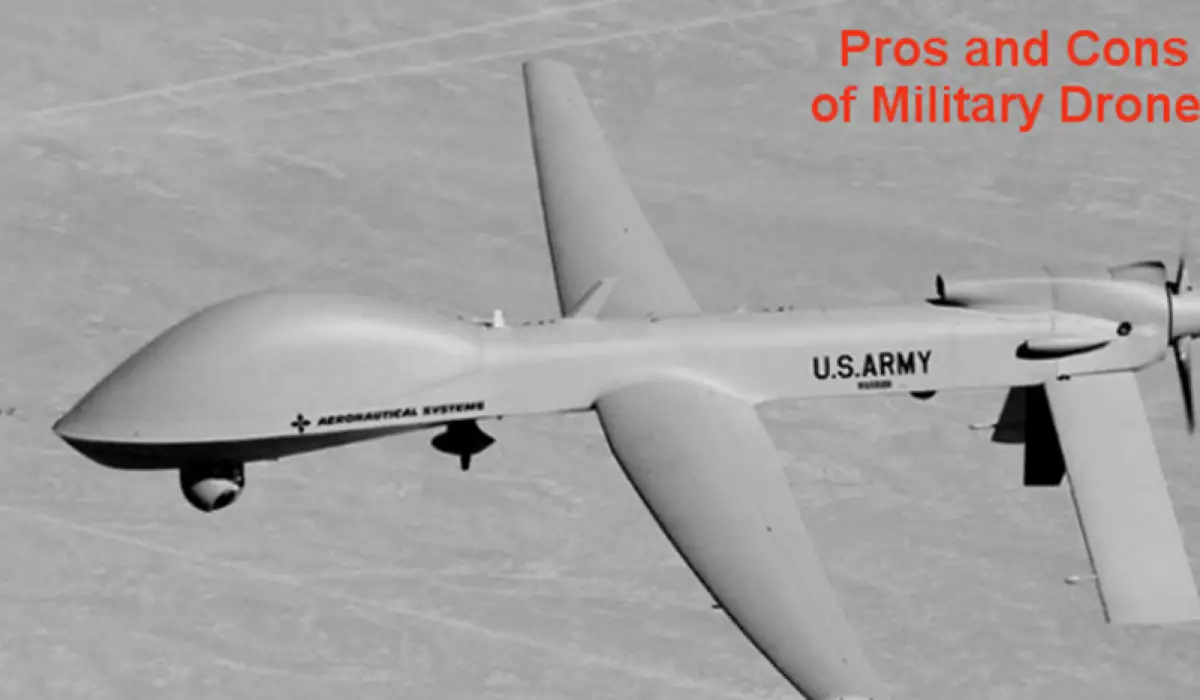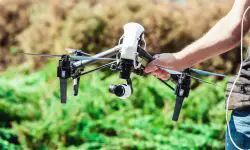As an Amazon Associate I earn from qualifying purchases.
Drone technology was mainly invented for use by the military with an aim of simplifying the military’s engagement on the warfront. over the years, this technology has recorded numerous successes with a number of shortcomings. We take a look at some of the shortcomings and strengths of military drones.
Pros:
Saves Lives: The most obvious advantage of military drones is that they greatly reduce putting military personnel in harm’s way or in combat. This is because alot of these drones are unmanned and therefore there is not human life in danger.
Low Cost: The second most obvious advantage of drones is their low cost, because they are significantly cheaper to purchase, fuel, and maintain than regular airplanes.
Low Risk: Since drones are smaller and can fly lower than traditional airplanes, there is less risk to military hardware. This ensures that the expensive military hardware are only deployed as and when it is very necessary.
Operational Hours: Without a human pilot, drones can stay in operation for significantly longer hours of operation without fatigue. Additionally, drone pilots or operators can easily hand off controls of a drone without any operational downtime.
Accuracy: Drones can have more pinpoint accuracy from greater distances, thus reducing collateral damage to civilians and infrastructure. This works well in terms of ensuring accountability in the military ranks.
Lethal: Drones are as lethal to enemy combats as regular airplanes. This means that it is easier to neutralize enemy power using a drone with minimal human casualties.
Spying: Years before drones were used in combat; drones have proven to increase surveillance, reconnaissance, and general military intelligence. Because of their stealth nature, it is difficult for the enemy to notice a drone operation.
Deployment: Drones are significantly easier and faster to deploy than most alternatives. Some drones can be deployed by hand while others can simply take off like a normal aircraft.
Saves time: Drones also play an important role in saving the time needed to neutralize an enemy because they are always ready to be deployed.
Cons:
Limited Abilities: Drones have obvious limitations. For example, they cannot communicate with civilians for more detailed intelligence. Drones cannot capture surrendering military personnel, abandoned hardware, or military bases.
Civilian Losses: Drone warfare often causes collateral damages in civilian lives and property, as well as traditional warfare too. This is because they do not have the capacity to make judgment on whether to deploy or not.
Counterproductive and Destabilizing: Civilian opinions about drones are typically negative, since they are viewed as an invasion force. The mere presence of drones has been known to convert civilians into military combats. Furthermore, when drones cause collateral damage, such as killing civilians and damaging civilian property, the opinions of civilians decrease even more so.
Too Easy: By making drone warfare very similar to video games, drone warfare makes combat too easy by diminishing ethical decisions. To many, it always seems like a game simulation when using a drone and therefore the possibility of making sound ethical judgment may not always be there.
Work and Personal Life Balance: Some drone pilots or operators have difficulty switching between combat mode at work and civilian mode while not working. This is especially difficult when drone pilots have minimal transition periods between work and personal, if any at all.
Take Over: The worst case scenario is when drones or a fleet of drones have been commandeered or taken control by the enemy. While security measures help make this possibility more difficult, it will never be impossible.
Can be shot down: Drones can always be shot down by the enemy and this possibility grows by the day. This leaves a vacuum when the drone has been shot down and leaves the military vulnerable.
Costly: Drone technology has not come without a cost. It is increasingly becoming expensive for the military to invest and research on drones since this is the next frontier in terms of modern warfare. Countries that lack significant military spending may not utilize fully the power of drone warfare and this leaves them more vulnerable when it comes to drone warfare.
Amazon and the Amazon logo are trademarks of Amazon.com, Inc, or its affiliates.





Behold the RQ-4 Global Hawk, the ultimate champion of the drone realm! With jaw-dropping functionality and a price tag of $220 million, it’s clear that this drone means business while having some serious fun.